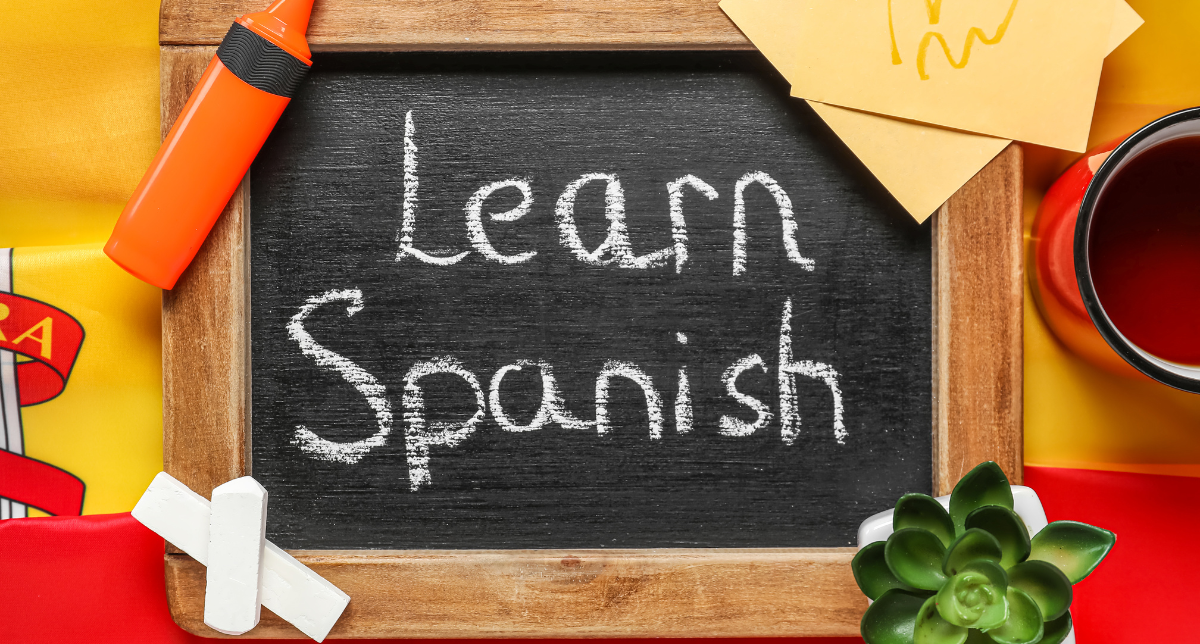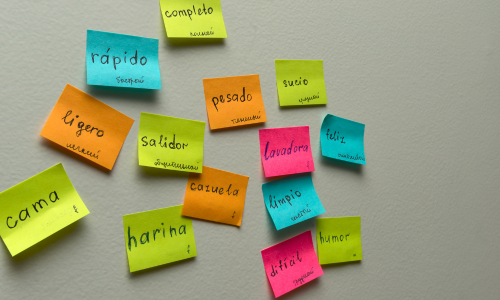3 Simple Ways to Bring Spanish Into Your Homeschool Day
(Even If You Don’t Speak It)

Teaching a new language at home doesn’t have to mean buying an expensive curriculum or adding another complex subject to your already full plate. In fact, some of the most effective ways to introduce Spanish into your homeschool routine are simple, low-pressure, and even fun, no fluency required.
Here are three easy, flexible ways to bring Spanish into your day-to-day life, using what you already have at home!
1. Make It Visual
 A structured program is important, but layering in small, consistent habits can bring Spanish to life at home. Kids need to see the target language around them—that’s where a visual environment can be a huge help!
A structured program is important, but layering in small, consistent habits can bring Spanish to life at home. Kids need to see the target language around them—that’s where a visual environment can be a huge help!
Start by picking a few common household objects (think table, door, light, or mirror) and label them in Spanish. Not everything needs to be labeled at once. Try rotating 3–5 new objects each week. Tape the label somewhere visible and make a habit of pointing to it and saying the word together once or twice a day.
This simple act of seeing + saying adds up. Over time, the vocabulary becomes part of their environment, and their memory.
Pro tip: Let your kids help! Invite them to place the labels, quiz you on them, or create drawings of what they mean. When children participate in creating the learning space, they’re more likely to engage with it.
2. Create Language Rituals
 Small, everyday moments are the perfect time to build momentum in your child’s language learning journey. Layer Spanish into moments that are already part of your daily rhythm to help the language feel natural at home.
Small, everyday moments are the perfect time to build momentum in your child’s language learning journey. Layer Spanish into moments that are already part of your daily rhythm to help the language feel natural at home.
Try saying “Buenos días” in the morning or “Vamos” when it’s time to head out the door. Choose one Spanish word or phrase per week to practice as a family; even just repeating it once a day can go a long way.
Another easy win? Music. Play Spanish songs during snack time, clean-up, or while driving to co-op. It’s a no-pressure way to introduce rhythm, pronunciation, and vocabulary into your child’s routine.
Feeling stretched thin? Use passive moments (like brushing teeth, putting on shoes, waiting for lunch) to sneak in one small phrase or word. The goal isn’t to “get it right,” but to build confidence and consistency over time.
3. Keep It Playful!
 The most powerful learning often happens through conversation, not correction. That’s especially true with language.
The most powerful learning often happens through conversation, not correction. That’s especially true with language.
Let your child “teach” you a word they’ve learned, even if they get it wrong. Turn it into a shared discovery. If you have multiple kids, make it a challenge: Who can find the most labeled objects in under a minute? Or who can remember last week’s “word of the day”?
You can also tie language into real-world moments. If you’re cooking a dish from a Spanish-speaking country, talk about where it’s from or look up the names of ingredients together in Spanish. If your child loves animals, try naming a few in Spanish during playtime.
The magic happens when Spanish isn’t treated as a separate subject, but as something woven into your family’s life: messy, imperfect, and all.
Start Small, Together
Introducing a new language can feel intimidating at first, but it doesn’t have to be.
With just a few thoughtful touchpoints each day—a label on the fridge, a fun song in the background, a new word at dinner—you’re laying the groundwork for confidence, curiosity, and connection. No pressure. No fluency needed.
Just start where you are, and let your kids grow from there!
Share this post

